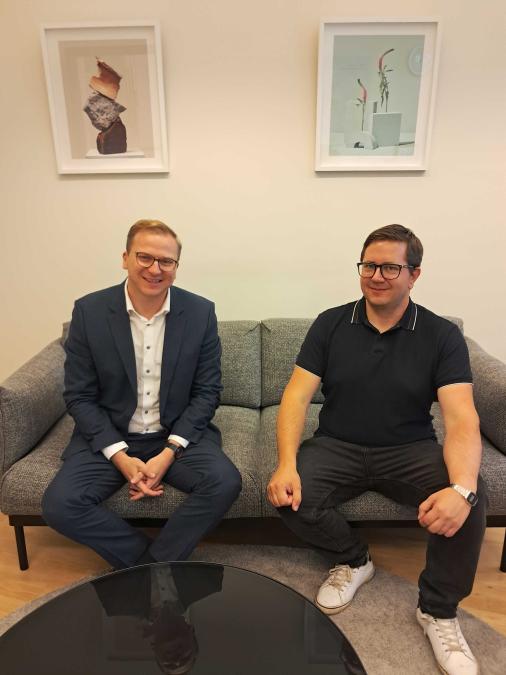What happens when a school psychologist becomes the chief architect of the city's education? In this story, we meet the head of the Tallinn Education Board.
Education does not happen in a vacuum. A three-month internship at Wise, mentors from the private sector. This gave rise to the courage to renew the value proposition and recruitment practices of teachers and expand the program to hobby schools and kindergartens. Collaboration has become bridges, not drains: visits, training, shared experience. You can't make big transitions without bridges.
We also touch on hot topics. Should the kindergarten place fee disappear? How to combine the peace of families and the city's wallet? The answer does not hide the complexity: limited resources must be directed primarily to people and buildings that really keep learning going.
A leader who grows tomatoes in a greenhouse in the summer, reads poetry, studies Norwegian trolls and believes in slow education: everything doesn't have to happen at once. He imagines the Tallinn kindergarten of 2045 as a diverse and nature-centered place, where technology supports, not replaces, and social skills remain at the center.
Below, we will talk about this journey: how burnout gave rise to a leadership vocation, why collaboration with the private sector helps in the classroom, how to measure impacts in a way that doesn’t belittle people, and what choices will make education a place of courage and joy again. Let’s start at the beginning.
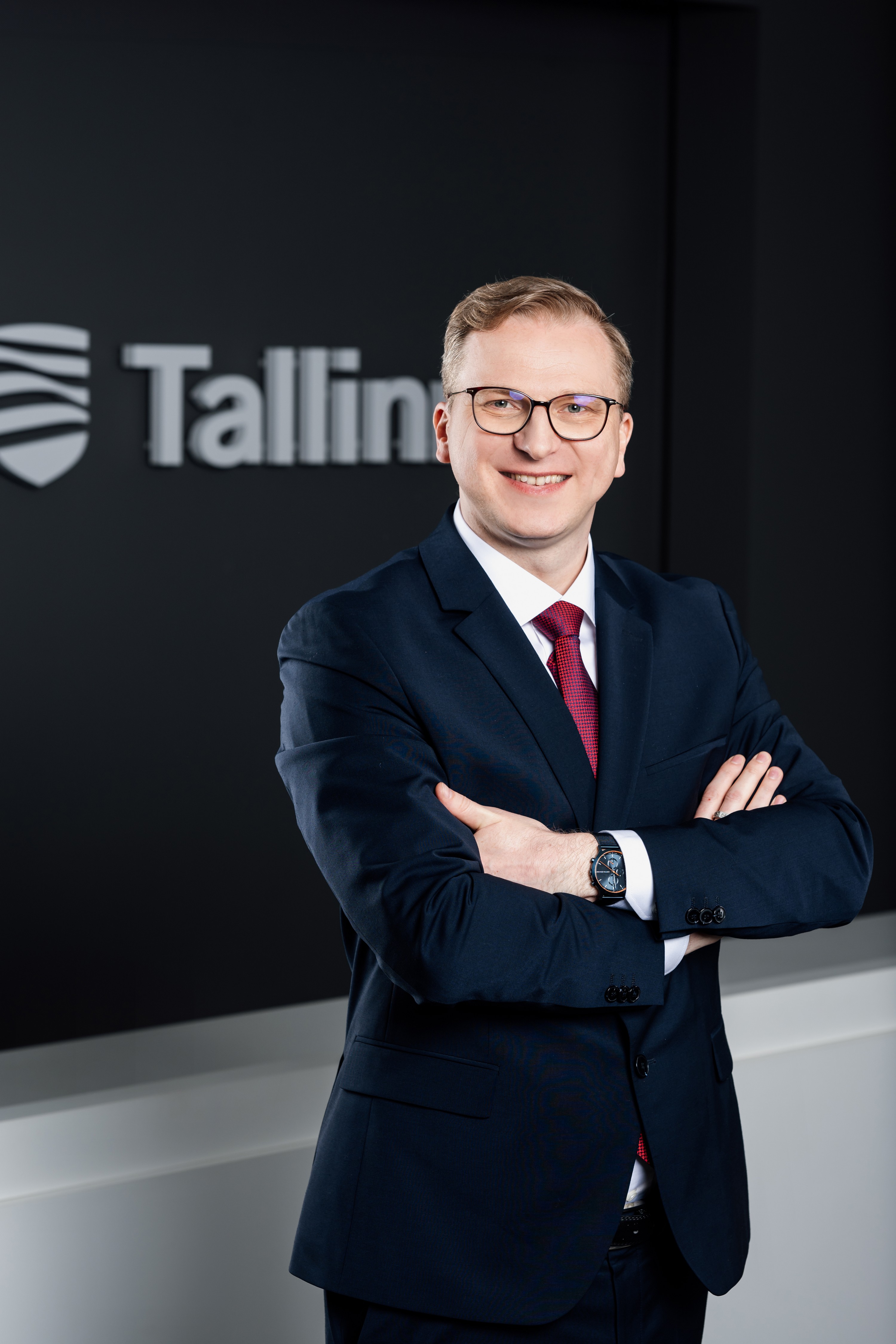
I have heard that you have been a school principal before and I remember from somewhere that you did an internship at Wise. What were the most important stages on the journey to the position of the head of the Tallinn Education Board?
My education began as a school psychologist and social pedagogue. After about seven years, I felt that I was burning out. I wanted to make changes that I could not always implement in my role. That is where the decision to study educational leadership came from: I want to implement some things that I believe are necessary. I was lucky to have good mentors: the former principal raised me under his guidance, allowed me to study. When he retired, I applied for the position of principal of the Tallinn German Gymnasium, and I got the opportunity. I was a school principal there for seven years. During this time, I became convinced that systemic changes can be made if you have both a team and the space to experiment and learn from other sectors.
Please tell us more about your internship in the private sector. What program did it take place through and what did you bring to your work as a school principal?
In the penultimate year of school leadership, I participated in an initiative that the Tallinn Education Board did together with Fontese and the Good Deed Education Foundation: school leaders were sent to the private sector for three months for an internship, not just as a job shadow. My internship was at Wise. I took several principles with me from there. First, there is an opportunity to learn from everyone. A learning culture is not a slogan, but a daily practice. Second, I was impressed by how much is invested in employees. I brought this back to school: I completely renewed my employees’ value proposition, both its communication and its content. This is especially important for an educational leader, because unlike countries where teachers are centrally placed in schools, we have the responsibility of each leader: with whom they collaborate, whom they invite to their team. The internship confirmed that targeted recruitment and a well-thought-out value proposition are the keys to a strong school culture and good results.
In your opinion, what skills should be taught the most in schools?
During my internship, I talked to over thirty people and asked everyone what they thought should be taught in schools. The answers were surprisingly unanimous: the most important things are cooperation with other people, communication skills and being a human being. To be honest, I expected programming and technology to be at the top of the list, but I liked this value shift. This does not mean that technology is not needed, it means that human-centered general competencies must be consciously and consistently developed, because they are the foundation on which the technical skills laid down will really work.
How has the cooperation with the private sector progressed in a broader sense?
I am very happy that the initiative is continuing. My mentor Lars Trunin also came to visit me at school. Such mutual visits break down prejudices and bring practice into the classroom. We have expanded the program: now hobby school directors and kindergarten leaders have also been involved since last year. The 7th round should start now. In my opinion, this is an excellent cooperation between the private sector and education. School leaders receive support in recruitment, management and culture shaping; companies see how education actually works and find ways to contribute to skills and community development.
Very cool. Who are these companies, who are they currently taking under their wing?
The picture changes slightly every year: some partners are added, some are taking a break, but banks such as Swedbank, SEB and LHV have remained constant. In addition, there have been a number of start-ups and also companies from which you might not at first glance expect to learn anything from education. A good example is the Unemployment Insurance Fund. A great experience in terms of practical work organization. RMK also came on board recently; the director of Mahtra Basic School, for example, did an internship there and the feedback was very good from both sides. The combination of banks, start-ups and public sector organizations gives school leaders very different perspectives on management, service design and teamwork.
If you could name one change that you yourself implemented immediately after returning from the internship, what would it be?
The most concrete step was a complete renewal of the value proposition of employees, from the message and visibility to real-life benefits and development opportunities. I understood very clearly that a good school is made of good people, and finding, keeping and developing them is the main activity of a leader. From there came a systematic approach to recruitment, regular feedback and rituals that support a learning culture. In other words: if you want students to learn well, first create an environment where teachers can shine.
What were the activities that you did, for example, and what can others expect when they join the program?
The program is jointly run by two strong partners, Fontes and the Good Deed Education Foundation. Fontes conducts a pre-assessment before the start: maps the leader’s strengths, development needs and focuses; the mentor is selected based on the profile. Autonomy is of great value: the participant sets goals with the mentor that he or she wants to do and learn during the internship.
The internship itself is very diverse. Examples of work that managers have done:
Renewing the value proposition and internal communication, including career paths, development interviews, visibility.
Designing and conducting events and trainings, sometimes even a specific task, do a two-day training on this and that topic.
Participation in the work of development and strategy teams, mapping and improving processes.
Recruitment: interviews, candidate assessment, onboarding solutions.
Cooperation with international teams, for example, conversations with the head of the partner's Canadian unit to compare how they recruit and where they contribute.
Such a tailor-made solution means that each manager takes from the internship exactly what best transfers to the development of their educational institution.
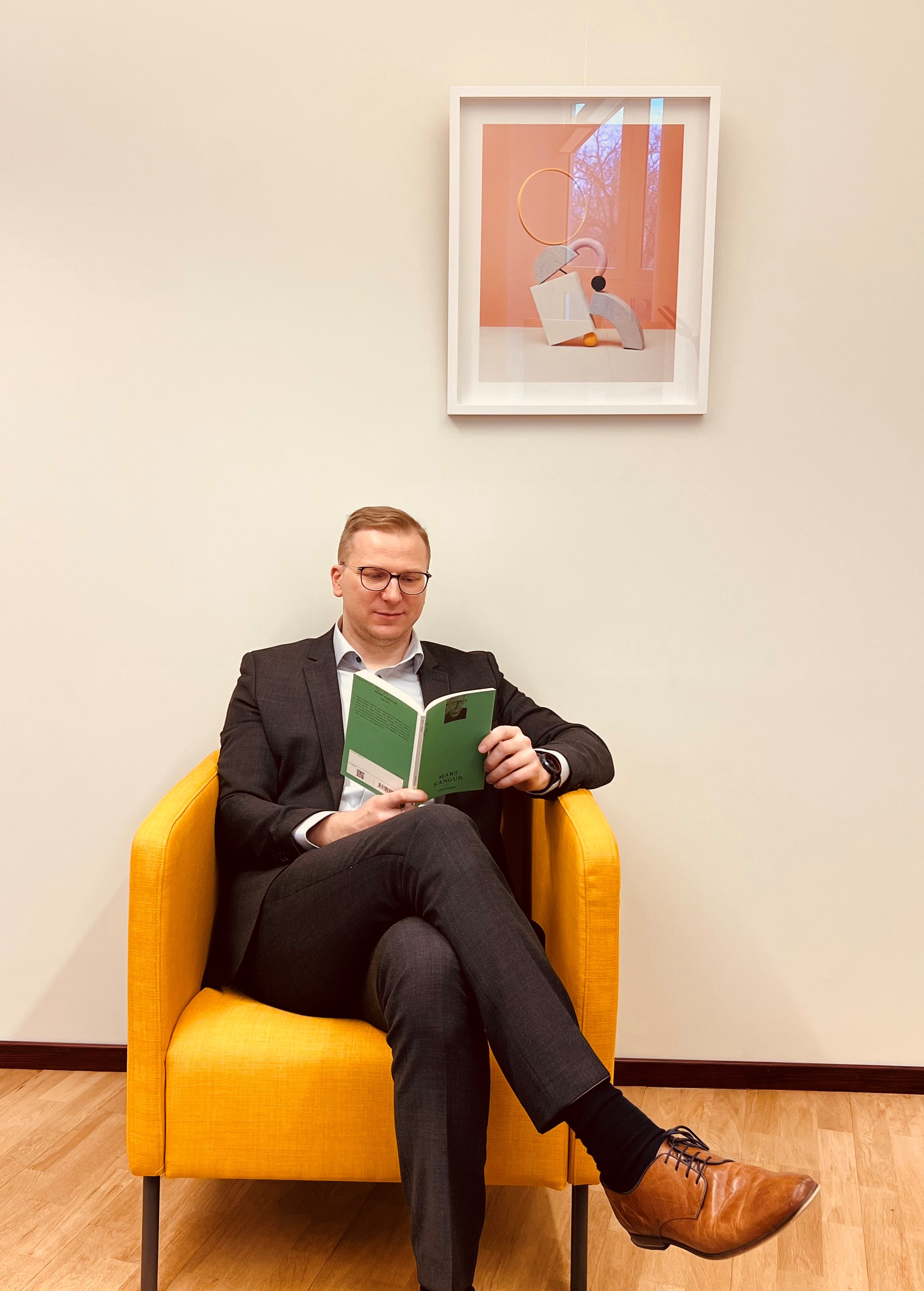
What do you think makes this initiative special and why does it work?
First, authentic tasks: participants are not job shadowing, but real team members with measurable goals. Second, mutual learning: school leaders bring a pedagogical and community perspective to companies, companies bring back a culture of investing in people development, recruitment and process. Third, network: after the internship, lasting relationships often begin - trainings, visits, projects. As I have experienced myself, this is one of the best training projects for people in the education sector.
If you had to give one piece of advice to a leader who is going on an internship for the first time, what would it be?
Go with goals, but keep them flexible for learning. Ask at each stage: what do I really take home from here - one specific tool, e.g. the recruitment interview structure, one ritual, e.g. a regular feedback loop, one principle, e.g. how do we develop our people. And maintain a post-program bridge with the partner, because that is what makes the impact lasting.
Let’s start with the volume and opportunity: you said that a new round is about to start. How many leaders can the program accommodate at once and how do you even get there, considering that there are 124 kindergartens and many schools in Tallinn?
If we’re talking about Tallinn, around 190 education managers, that’s a lot. So far, the program has completed 6 rounds, 5 people each year. At first, school leaders participated, but now both schools and kindergartens have the opportunity. The impact is already noticeable: half of the school leaders have been in the program at some point, and the impact is starting to be passed on, because leaders inspire each other.
How do you get into the program? The round is put together according to the size that the partner companies can actually accept, meaning the companies have to manage the volume that comes in. The city keeps the minimum: at least 5 people per year; if capacity allows, some rounds can be larger. So, the application process is round by round, the focus is on motivation and clearly formulated goals, along with the suitability of the mentor.
In whose interest is this program, in the end, only the Tallinn Education Board, or more broadly?
Internship is not a pleasure for the profession, it is a benefit for the ecosystem. Leaders bring fresh tools to schools and kindergartens - recruitment, value proposition, process culture, and companies get a real picture of education and permanent relationships are created. Cooperation has continued with trainings, visits, visiting companies with teams and vice versa - inspirational speakers to schools. Some leaders also take on the next bigger challenge after the internship, either in their own institution or in a new role. This is natural and this is what shows that it has an impact.
Let's jump back to you for a moment. If you were not the leader of the Tallinn Education Board, what would you do?
Self-fulfillment in the field of education is very, very important to me. I would be happy to be a school leader again someday. Or even return to my original calling - a school psychologist, and I would be happy to be a teacher. I am actually also a teacher of humanities. Teaching at a high school has been my happiest hours as an educational leader: direct contact, getting to know how young people see the world, what they value. And then perhaps a surprising branch: I could also be a gardener. I once considered going to Räpina Horticulture School. You always have to learn new things. It's never too late to learn.
Do you have time to garden at all now?
In the summer, I was able to plant various tomatoes and peppers, herbs in the greenhouse, and mow the lawn, cut branches and plant various trees. All of this is a very meditative and relaxing way to clear your head and keep your rhythm.
You often talk about lifelong learning. What are you learning now and how?
I want to learn something every day. Learning methods have become more diverse and conscious, especially with the advent of artificial intelligence, there is a lot of ongoing learning. Examples: trying out new recipes based on what is currently in the fridge, reading literature and poetry, where I can find new words, or unexpected micro-research, for example about Norwegian trolls. On a systemic level, I like the trend towards micro-degrees and online learning. If you need a specific skill, you can learn it from an e-course in another country. An important principle is to put yourself in uncomfortable situations, because learning works like health - from time to time you need to give yourself small shocks to maintain immunity.
What kind of leader are you? Well, there are many different types of leaders, especially on an international level. Are you more of a strategic leader with a long-term vision; a voice in the zone, or in every detail; a initiator who gets things moving and moves on to the next one; or a constant presenter who takes everyone on board? Or are you a combination of both?
I have heard from others that I am a balanced and humane, caring leader. I think about my role in such a way that my job is to find and keep the right people in the right roles and create conditions where they can work well. I trust my colleagues and do not micromanage them. We think about goals together, discuss options and risks, and ultimately the responsibility for the decision rests with the leader. To be honest, my fuse has become shorter over time, but it is more of an opportunity to consciously calm myself down, explain and balance goals, expectations and resources. Listening skills are also very important: I like to listen carefully before making a decision.
How and has your leadership style been different as a school principal and in the Education Board?
As a school principal, I was often hands-on and working together (student council, events, plays). The pace is different in the office: long-term goals, such as kindergarten renovations and constructions, are about 5-year processes that require negotiations, justification and a diplomatic role. The proportion of direct presence is lower, but the responsibility for the long view and the assembly of a systemic whole is greater.
Are you a leader who initiates big changes?
Yes, but for me this means unraveling the big strategy into daily steps. For example, switching to Estonian-language teaching: a big goal, accompanied by many meetings, discussions, asking for feedback and data-based management. It is important for me to keep two dimensions together: making the necessary decisions, but with dignity and humanity, explaining.
What are your decision-making tools and principles?
First, data-based. I make sure that a feeling becomes proven knowledge. Second, listening: before making decisions, I like to listen to different people and consider their arguments. Third, goal + flexibility: a clear big goal, a journey piece by piece. And fourth, conscious discomfort: I sometimes put myself in uncomfortable situations to test whether what we stand for is worth it. A little shake-up helps to make the blind spots visible.
I am so glad that you said right at the beginning that others characterize you as a caring leader. In education, this is a key quality. Speaking of data-driven management and especially the transition to Estonian-language education: how do you collect and use data to make decisions?
I'll start with some good news: today is the first day of our own analyst, which will help improve the quality and accuracy of the data. In the big picture, it's pretty amazing that Estonia has a lot of education data and education data is very public. At the same time, there are bottlenecks: there is certain data whose databases are not compatible with each other, and if the data is entered incorrectly, we can't use it.
In the context of the transition, we use several data lines and partnerships. For example, in cooperation with Alpa Kids, we get very accurate data on how children are progressing. As a custodian, we can see down to the institution and group level. It is important that information about a child's progress reaches the parents: this way we support smarter conversations between home and kindergarten school and progressive feedback.
How does ELIIS fit in here, is it just a data exchange channel or something more?
The ELIIS environment is so much more than just a data exchange and communication channel, it is increasingly a collaboration platform. If a parent sees pictures, in-depth feedback and can also do practical things at the end of the day, for example, common topics in the group, then transparent, daily communication is created. Our role is to ensure that the data is carefully stored and protected, but at the same time the information is disseminated to all necessary parties.
What happens if a new tool does not work for the city. How do you decide what to continue and what to stop?
Very simply and honestly: if we saw that the use was not working, we stopped it. This is part of data-driven management - we measure the use, the impact, e.g. language learning support, the burden, and then we make a decision. In parallel, we are developing a mental health data picture: from 2023 we will monitor well-being and based on this we will plan interventions in the form of seminars, co-vision, supervision or further training. The goal is that the data is not fragmented, but actionable.
How do you map competencies in a way that parents can understand?
We rely on the matrix solution created by the ministry and HARNO, based on which we get a running overview of how competencies are developing. The vision is that as a parent, I see a clear picture of my child's journey, e.g. mathematics, communication and civic competence, when they move to the 5th grade. I don't need to have a pedagogical education to understand this. This supports the mindset - less grades and more explanation, so that the feedback is progressive, not just numerical.
What does all this mean for Estonian education in general and what are the next steps?
Both Swedes and Germans come to watch our educational success story; we talk about the best practices of Estonian education and cooperation with edtechs. Yes, some initiatives, including those around artificial intelligence, cause discussion, but that's natural. I like that the role of educational psychology has grown over the years, especially considering the early childhood education reform that will be implemented this fall. Ultimately, the goal is simple: to make smart decisions in education, based on science, technological capabilities, and people skills, and to do so in a way that the solutions are understandable and easily accessible to the user.
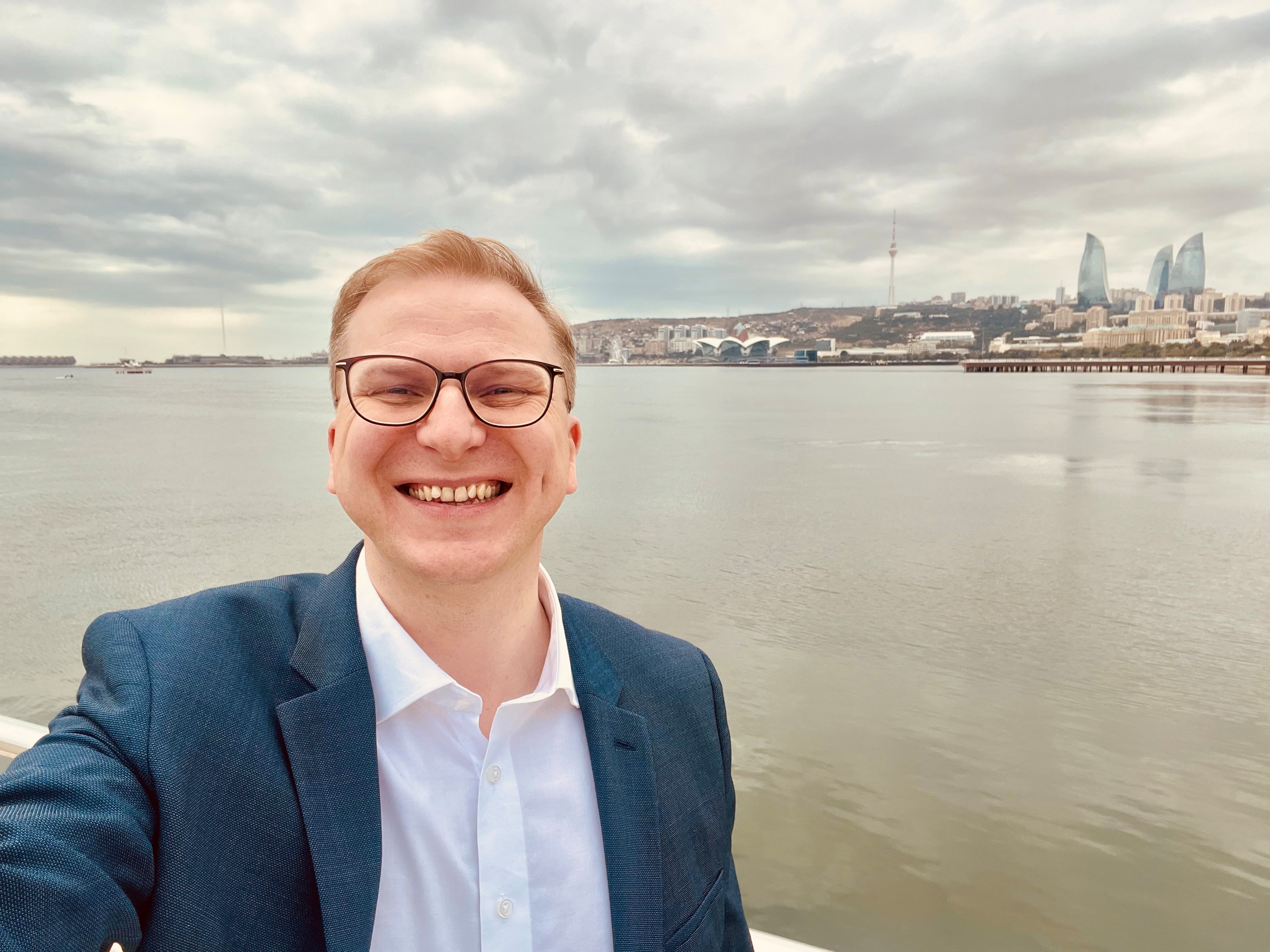
If you had to formulate one principle that guides you from data to decision, what would it be?
Human applicability. Data is the beginning, not the end: we need to see the people and environment behind them. Only then will the decision born from the data be measurable, effective and truly useful for the child, teacher and parent.
It is certainly a long road and many challenges. I am pleased to say that our developers are currently building an interface between ELIIS and Alpa Kids. The goal is to collect anonymous, generalized data that will help make smarter decisions. In the meantime, I got the impression that you are talking like an ELIIS user. Do you use ELIIS yourself?
Yes, I use it as a parent: one child is going to the second grade and the other is still in kindergarten. I like that the environment is very clear, clear, very simple and especially that on mobile, if you need to quickly note something or send a message, it is very conveniently solved. I also appreciate that it is available in different languages, which helps to better involve non-native speakers of English.
Have you encountered any problems with ELIIS?
I can't say that I have any problems. My experience is from a parent's perspective; from a teacher or principal's perspective, the joys and worries are different. In this role, I have received important information from there and that is the main thing - clarity, speed and linguistic access. When it comes to technical glitches, nothing immediately comes to mind.
It is also fair to say that a parent sees only a small part of ELIIS and most of the functions are designed to simplify the teacher's work. Do you think this approach is right?
Yes. As a parent, I need to get the necessary overview and communication, but ELIIS is primarily a teacher's tool. This means a role-based view - the teacher sees and does more, e.g. documentation, work schedules, planning of educational activities, the parent sees what is important to him/her. This way, the data remains stored and protected, the information moves accurately and each party has a working, understandable experience.
Now let's jump to you as a leader: what are you most proud of in Tallinn, what are the big things that have really worked out well during your leadership?
The number one thing is still the transition to Estonian-language education. It affected Tallinn greatly. Out of nearly 50,000 students, just under 20,000 were in transition schools.
It's not just the goal that matters, but also the journey. This means sometimes being a critical friend - caring and demanding, keeping people healthy and doing it together with teachers. On a practical level, this meant developing tests and teaching materials in collaboration with experts in the field and building a methodological competence center at the Teachers' House, where experienced specialists help schools and kindergartens build LAK (integrated subject and language learning) competencies.
The second major action is the systematic organization of teacher recruitment: from this summer there will be a unified platform that allows candidates not to disappear if they do not fit in one building, they have the opportunity to reach another institution. This has been critical especially in the previous and this summer of the transition year, when managers did a lot of recruiting.
The third action is the development of support structures - special needs education in schools, additional roles in kindergartens arising from the Early Childhood Education Act, e.g. positions supporting support teams, are of great importance in the context of Tallinn, because the proportion of children with special educational needs and also non-native speakers is high and teachers must really have someone to receive support from.
Teacher recruitment is difficult everywhere. What is different in Tallinn and what works well?
The key to success is a well-thought-out unified journey: clarity of roles, a visible value proposition and a candidate bank that is alive. Recruitment campaigns have brought career changers. Of course, not everything stays, and this is natural; It is important that people who meet the qualification requirements are in the front of the class and that the children are in the hands of good and competent people. In parallel, work is being done for the long-term future: cooperation with universities, practitioners and competence centers so that newcomers are not alone.
What is Tallinn's next big focus in education?
The year of inclusive education is beginning. Data such as HARNO's periodic surveys show two truths at once: the risk of burnout is often associated with the burden of inclusive education, while teachers feel more confident working with children with special needs year after year.
The answer is three-pronged:
People: in addition to teachers, continue to recruit support specialists, special educators, speech therapists, social educators, psychologists, and teaching assistants.
Funding: in addition to national differentiation, the city has its own funds that can truly support the support team.
Skills: city-level training to support children with other languages, overcoming cultural differences, teaching organization in inclusive classes, and methodological support through the competence center.
How do you maintain the mental health of educational staff?
The city offers free anonymous psychological counseling. First, we offered it only to managers, then to management teams, now to all educational staff. The number of users is on an increasing trend. This can be interpreted as a growing concern, but we choose a different view - awareness has grown and people are boldly asking for help and taking care of themselves. This is a change in culture that keeps the system working even during major restructuring.
If you could name one principle that connects these steps, what would it be?
Caring systematicity. Major strategies such as transition to Estonian-language teaching and inclusive education only work if they are person-centered, supported by data, and simultaneously implementation-oriented and demanding.
What are the main priorities of Tallinn kindergartens in the coming years?
The goal is to return to the 2+1 model, i.e. two teachers + teacher assistant. Due to the pressure of the transition, we had to temporarily switch to 1+2 in some groups, but the goal is to reverse this trend.
Demographics are changing: in some areas we are closing groups, in others we are opening more. We make decisions based on data and community needs.
In the current economic situation, we are no longer building ten kindergartens a year, so we are prioritizing smart renovation of existing buildings. How can we make the old H-shaped houses compliant by 2030 so that ventilation, movement conditions, access are guaranteed and construction processes are brisk.
There is a very high proportion of non-native language children in Tallinn. The emphasis is on the transition to Estonian-language education and the integration of children with other home languages, including children from international families who come to work here.
We will continue with the “Wonderful Years” program to support parenting skills without labeling. The new Early Childhood Education Act stipulates that parents are jointly responsible for the kindergarten, which balances everyone’s expectations and strengthens shared responsibility.
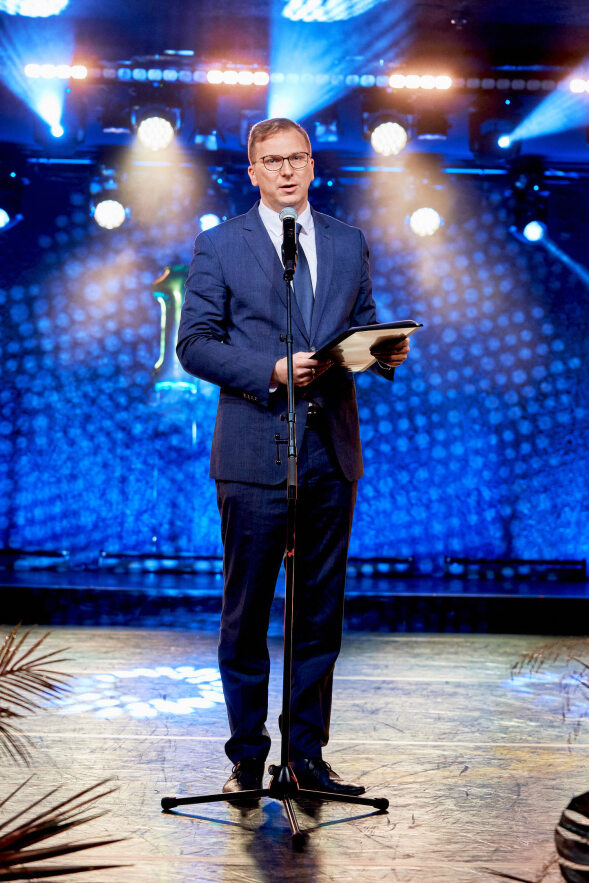
There are countries in Europe where kindergartens are open until 1–2 p.m. Could it be the same in Estonia?
Ideally, I like shorter days and more time with family, but the reality of Tallinn requires flexible models. We have night shift professions - ambulance, police, etc. and parents whose work does not end at 2 a.m. Therefore, I see more choices: in some places a really shorter morning model, in others an extended afternoon, e.g. 2–8 p.m., and alongside pedagogically diverse solutions such as outdoor kindergartens, bus kindergartens, etc. The big picture is balance - we take more time for loved ones, but we arrange services so that life actually works.
A topic that has been heavily highlighted in the media recently is whether Tallinn should abolish the kindergarten place fee?
This is a sensitive topic. Tallinn recently lowered the place fee to 50 euros, which in my opinion is an adequate level. Your contribution is important, it helps to realize that this is a service that is backed by a learning environment, specialists, and teachers. At the same time, a fairly large percentage of families have already been exempted due to favorable socio-economic reasons.
My assessment is that, first of all, we need to invest in people - teachers' salaries, securing support specialists, renovating buildings to ensure a good learning space. A free place fee would ease the families' wallets, but first and foremost, it is sensible to direct money to educational staff so that children are in the hands of good people.
What could a Tallinn kindergarten be like in 2045?
Diverse, both in terms of people, learning styles, and pedagogy. Social skills are definitely at the heart of it - how to be a person and remain a person in the midst of all crises. I would like to see more hobby education in kindergarten, but we need to think about what personalized learning is in early childhood education. And learning in cooperation with nature. My own kindergarten memories from Aravete kindergarten are full of that. Lots of spending time outdoors, collecting leaves from trees, doing crafts, working together. This must remain in the future.
Speaking of outdoor activities and playgrounds - what is good in Estonia?
I really like the parks and playgrounds for children in Estonia. Recent comparisons, e.g. Oslo, Spain, show that we have more diverse, more nature-focused solutions where you can climb, learn, really experience, not just on asphalt.
We have a lot of autonomy and it seems that we have used it wisely. I hope that this will continue.
And of course, the key to success is dedicated educators and supportive families!

